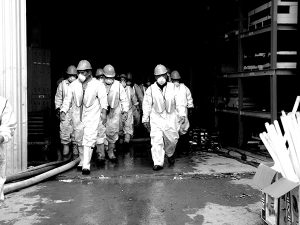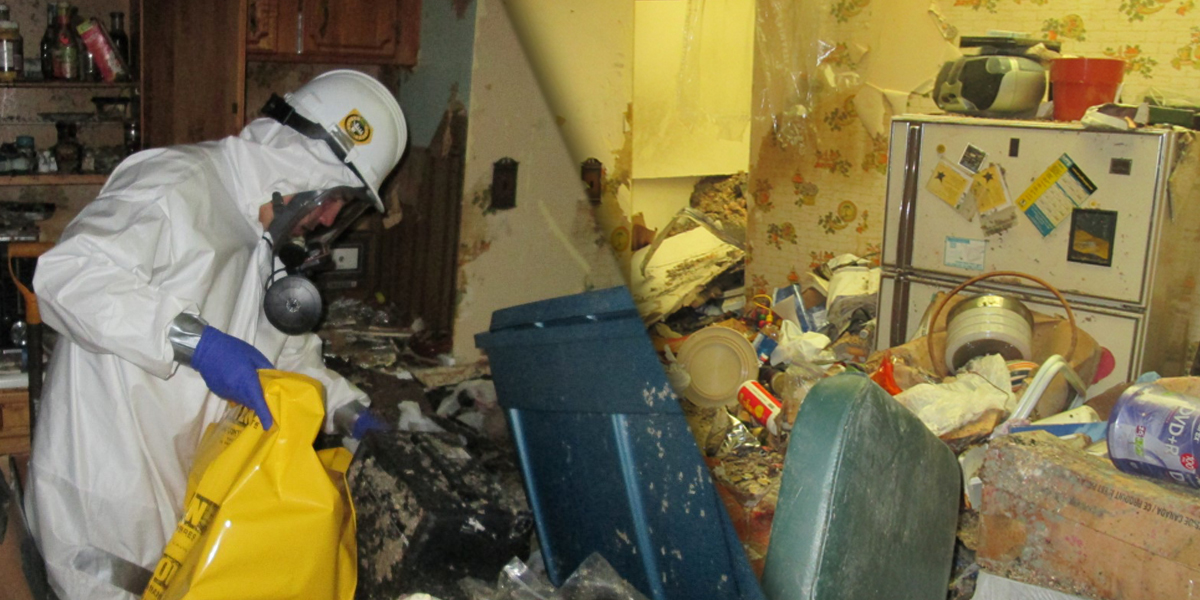Biohazard Removal: Safe Handling and Disposal of Hazardous Materials
Biohazard Removal: Safe Handling and Disposal of Hazardous Materials
Blog Article
Professional Biohazard Cleaning and Purification for Blood, Bodily Fluids, and Hazardous Products
The potential health dangers associated with direct exposure to biohazards highlight the essential need for thorough handling and detailed cleaning. As we navigate the elaborate landscape of biohazard clean-up, understanding the nuances of policies, conformity, and the specific tools at play comes to be necessary in guaranteeing a extensive and risk-free purification process.
Wellness Risks of Biohazard Exposure
Exposure to biohazards postures considerable wellness threats that can cause serious consequences for neighborhoods and individuals alike. Biohazards incorporate a vast array of organic substances, consisting of blood, physical fluids, mold, bacteria, infections, and other possibly infectious materials. When individuals enter call with these biohazards, whether through accidents, incorrect handling, or ecological direct exposure, they deal with the danger of contracting major illnesses or conditions.
Among the key health and wellness dangers connected with biohazard exposure is the transmission of contagious conditions. Bloodborne microorganisms such as HIV, hepatitis B and C, and numerous germs can be existing in biohazardous materials, posing a straight threat to human health. Breathing in airborne biohazards like mold and mildew spores or entering into contact with infected surfaces can additionally cause respiratory system issues, allergies, and various other adverse health and wellness results.
Furthermore, biohazard direct exposure can have lasting wellness implications, with some conditions manifesting years after the preliminary get in touch with (Blood Cleanup). Consequently, it is vital to prioritize appropriate biohazard cleansing and purification to mitigate these health and wellness threats and ensure the safety of people and areas

Specialized Training for Biohazard Cleaning
When it comes to managing biohazard clean-up effectively and securely, specialized training plays a fundamental duty in ensuring proper decontamination procedures are followed. Biohazard cleanup needs specific understanding and skills to effectively minimize dangers connected with bloodborne virus, bodily liquids, and hazardous products. Experts learnt biohazard cleaning undertake strenuous guideline on just how to securely take care of, eliminate, and take care of biohazardous materials to stop contamination and exposure.
Specialized training for biohazard cleanup covers a series of important topics, including appropriate individual protective tools (PPE) usage, bloodborne pathogen recognition, decontamination techniques, and unsafe waste disposal methods. People learnt biohazard cleaning are geared up with the necessary expertise to evaluate contamination levels, identify potential risks, and carry out appropriate cleanup treatments in conformity with regulative requirements.
Constant training and education are critical in the area of biohazard cleaning to remain upgraded on the current decontamination technologies, security protocols, and regulations. By buying specialized training, biohazard cleanup experts can effectively react to emergency situation cleaning situations and guard both public health and the setting.
Significance of Appropriate Decontamination Techniques
Using proper decontamination strategies is crucial in biohazard cleaning to successfully eliminate unsafe products and decrease wellness risks. Efficient purification not just ensures the removal of noticeable traces of blood, physical liquids, and various other biohazards but also targets invisible virus that might posture serious health hazards if not properly removed. By complying with stringent decontamination procedures, trained experts can significantly reduce the risk of exposure to unsafe microbes, infections, and germs that can lead to infections or diseases.
Appropriate purification techniques involve using specific tools and disinfectants that are particularly designed to counteract biohazards successfully. Comprehensive cleaning and disinfection of polluted locations are important to prevent the spread of pathogens and make sure a secure setting for residents. Furthermore, the proper disposal of biohazardous waste complying with decontamination procedures is vital in protecting against contamination of other surface areas or individuals.

Devices and Tools for Safe Clean-up
When dealing with blood, bodily liquids, or unsafe products, biohazard cleansing experts rely on specialized equipment to minimize direct exposure risks and thoroughly how to clean up blood so luminol won't work decontaminate the afflicted location. In addition, biohazard cleaning kits consisting of anti-bacterials, absorbent materials, and biohazard bags are utilized to safely contain and dispose of polluted items.
Advanced cleansing tools like hospital-grade disinfectants, HEPA-filtered vacuum cleaners, and misting machines are employed to disinfect surfaces and eliminate biohazards efficiently. Specialized devices such as sharps containers and biohazard waste disposal bins are made use of to safely handle sharp things and biohazardous waste products. By making use of the best devices and tools, biohazard cleaning specialists can guarantee a detailed cleanup procedure that prioritizes safety and security and reduces health and wellness dangers for both workers and passengers of the affected area.
Regulations and Conformity in Biohazard Cleaning
Appropriate adherence to policies and conformity criteria is extremely important in biohazard cleaning to guarantee the security of both employees and the atmosphere. Federal government companies such as OSHA (Occupational Safety And Security and Health And Wellness Administration) and the EPA (Environmental Protection Agency) have actually developed details guidelines for biohazard cleaning procedures to lessen health risks and ecological contamination. These guidelines cover a series of elements consisting of the handling, transportation, and disposal of biohazardous products, as well as the necessary training and safety devices required for workers entailed in the cleaning process.
Biohazard cleaning business need to stay updated with these guidelines to ensure that their operations fulfill the called for security criteria. Failing to conform with these policies can lead to extreme repercussions, consisting of fines, lawsuit, and jeopardizing the health of individuals and the setting. By adhering to rigorous policies and conformity measures, biohazard cleansing firms can effectively alleviate risks and ensure a comprehensive and risk-free clean-up process for all celebrations entailed.
Verdict
To conclude, biohazard cleansing and decontamination call for customized training, correct techniques, and adherence to guidelines. Exposure to blood, bodily liquids, and unsafe materials postures considerable wellness dangers, making it important to utilize the right tools and tools for safe clean-up. By adhering to stringent procedures and standards, specialists can efficiently reduce the dangers associated with biohazard direct exposure and make certain the safety of both themselves and others.
As we browse the elaborate landscape of biohazard cleanup, understanding the nuances of policies, conformity, and the specialized equipment at play ends up being critical in ensuring a risk-free and comprehensive purification process. (Blood Cleanup)
When it comes to managing biohazard cleaning successfully and safely, specialized training plays an essential role in making sure crime scene cleaner videos proper purification procedures are followed.Using correct decontamination methods is crucial in biohazard cleanup to properly minimize and remove unsafe products wellness dangers. Furthermore, biohazard cleaning sets containing anti-bacterials, absorbing products, and biohazard bags are made use of to safely get rid of and contain of polluted products.
Government companies such as OSHA (Occupational Safety And Security and Health And Wellness Management) and the EPA (Environmental Defense Agency) have developed certain guidelines for biohazard clean-up about his treatments to decrease health risks and environmental contamination.
Report this page